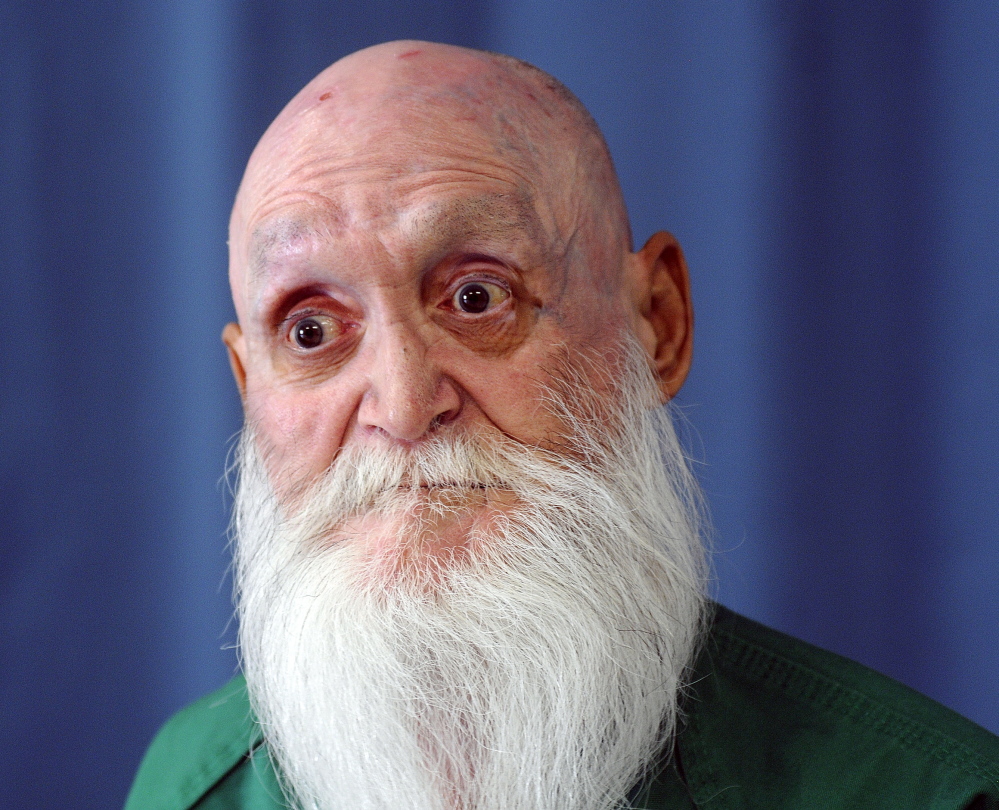AUGUSTA — Gary S. Raub said in a jailhouse interview Monday that he has no memory of Blanche Kimball, her house in Augusta or anything in the capital city.
“I pled guilty because it must have happened,” Raub said.
Raub, 65, was a transient living on the streets of Seattle, Washington, in October 2012 when he was arrested on an indictment charging him with criminal homicide in the second degree. He agreed to an interview Monday at the Kennebec County jail, shortly before he was taken to a state prison to serve his 20-year sentence for the 1976 killing of Kimball.
“I’m guilty but it doesn’t mean I admitted the crime,” he said. Raub entered an Alford plea, agreeing it was likely the state could prove that he did it. “I pled guilty mostly out of the fact that if I go to the maker, the God in the sky, I want a clear conscience.”
Raub was charged after police in Seattle gathered his DNA through a ruse that involved paying him $5 to participate in what they told him was a chewing gum survey. He believes that was entrapment.
“If they had asked me (for my DNA), I would have done it,” he said. “I have nothing to hide. They never asked me. I don’t know anything about law. I’m not an intelligent person as far as the law goes as far as entrapment. My attorney says, no, it wasn’t entrapment.”
Raub said he is smart about some things and proud that no one at the jail has beaten him at chess. He has had some medical problems. When he arrived at the jail, the 5-foot-7 man weighed 113 pounds, down from his usual 140 pounds, he said. He said he has no equilibrium and is subject to falls, adding that he fell on the concrete floor at the jail shortly before the interview, but caught himself with his arms.
Raub walks with an uneven gait and frequently reaches out to walls and furniture to check his balance. He still has a long white beard that appears to be his trademark.
“I take excellent care of it,” he said. “I take two showers a day.”
He had it dyed red by a hairdresser in advance of Halloween 2012, which is why it retained reddish-purplish streaks when he arrived in Maine in January 2013, following a lengthy extradition process.
Raub said a near fatal beating with a baseball bat in 1993 at Neah Bay, the Macah Indian reservation in Callam County, Washington, where he was born, took much of his memory.
“I had a really horrible life,” Raub said. He is estranged from his brothers and sisters, many of whom still live in Washington state.
He pointed to his bald head, saying neurosurgeons put in four titanium plates, screws and 1,296 stitches to try to repair the damage. He blames the morphine too, which was used in his treatment. “I walked away from life support,” he said.
Raub also said he believes the police tried to trap him into confessing to the slaying while he’s been held at Kennebec County jail for the past 17 months.
Raub said he was on five different cell blocks at the jail, and he believes detectives interviewed his former cellmates, two of whom apparently told police that Raub admitted killing Kimball, 70, a retired dental technician and practical nurse who occasionally took in boarders at her State Street home.
Raub, known in the 1970s as Gary Robert Wilson, lived at her home for a short time, but said he remembers nothing of Augusta.
“My attorney showed me photographs of places I lived,” he said. He recognized none, nor, he said, did he recognize Kimball or her house.
“I don’t remember her name at all, and that is the truth,” he said. “I’ve seen a lot of the pictures (taken of Kimball at the time her body was discovered). It was pretty gruesome.”
In contrast, he added, “I remember Portland really good. I remember being single and homeless and on my own in Portland, Maine.”
He referred to an alternate suspect theory put forward by his attorneys at a June 10 pretrial hearing.
At that time, Paul Bonsant, 57, of Augusta, described finding a knife buried at the base of a monument on Memorial Circle in Augusta in 1982 while he was planting gardens there for the city. Bonsant testified that he discarded the knife in July 2012 and never connected it to the unsolved murder from years earlier.
“This guy who was cleaning up a monument said he found the knife,” Raub said. “You just don’t find a knife in a field, you just don’t find a knife in a monument.”
Raub was questioned by police after Kimball’s body was discovered in early June 1976, but denied any involvement. He was convicted of burglarizing an Augusta home in December 1976 when police caught him with a knife in his hands, and spent five years in prison for that. Raub also did time in a number of other jails in Washington state and elsewhere, and records indicate he was in the federal prison system at one time.
Maine’s interest in Raub as a suspect in Kimball’s death rekindled after he was accused in an October 2011 stabbing in Seattle of another homeless man.
The knife from that incident was mailed to Maine, and analysts at the Maine State Police Crime Laboratory matched DNA on that knife to Raub and to that found on a kitchen drawer at Kimball’s house, according to an affidavit by Maine State Police Detective Abbe A. Chabot.
Kimball had 44 stab wounds, according to the medical examiner’s report, and police believe her attacker may have been injured as well.
“DNA from one little drop of blood on a drawer they said was mine,” Raub said.
Send questions/comments to the editors.




Comments are no longer available on this story